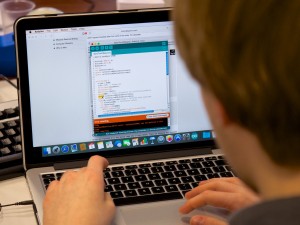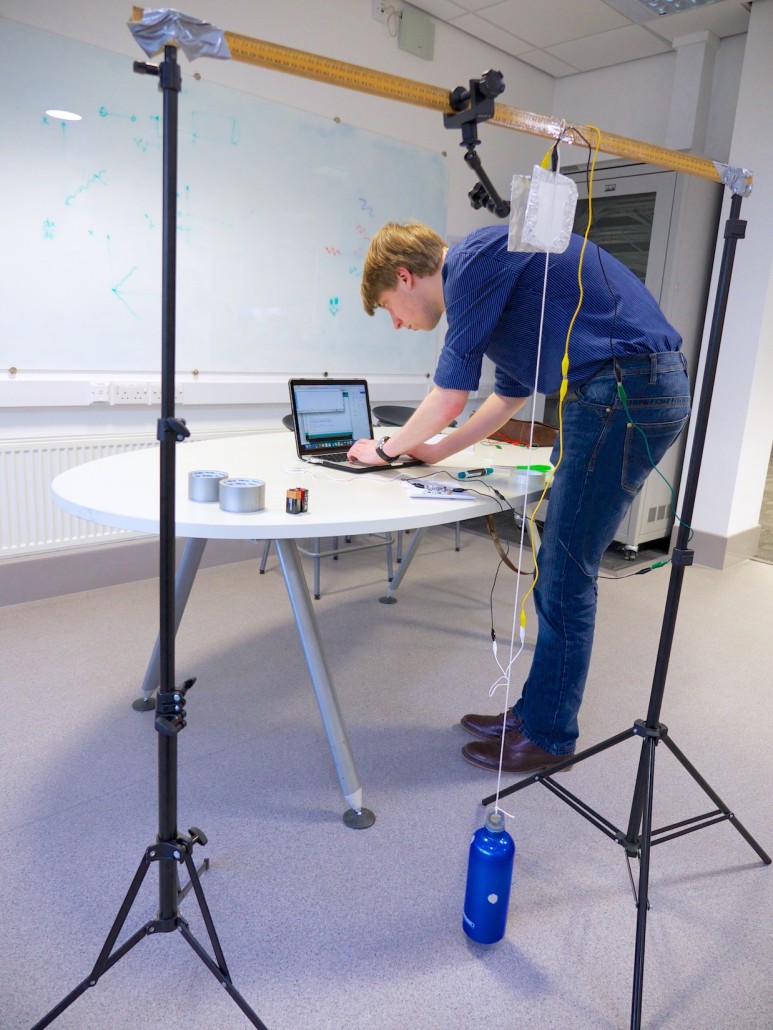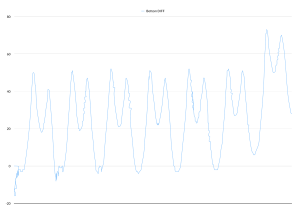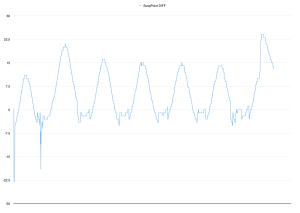Tinkering Thursday: March 5th “Turn it off!” edition
Andrew has invented the ANNOY-O-TRON!! It’s in block capitals and has two exclamation marks, to be particularly annoying. A development of the previous instrumented pendulum, the ANNOY-O-TRON!! features several key advances:
- Annoyingly many ‘compile / wait / upload / wait / fail / turn off / wait / turn back on / wait’ cycles.
- Annoying choice of annoyingly loud GarageBand synthesised instrument.
- Annoyingly flaky MIDI interface from the TouchBoard to GarageBand…
- …which turned out to be caused by an annoyingly obvious-in-hindsight bug. Who knew that unless you turn a note off before playing a new one, GarageBand spawns a new instrument for each, topping out at 64 instruments? Harrumph. Annoying.
- Annoyingly not-very-tremendous result in the end.

Andrew does battle with the less annoying parts of his code.
Annoyances aside: Andrew’s now turned the instrumented pendulum into something wholly more whimsical and ridiculous than, er, the sampled sine wave of previous weeks. He’s also had two sensors being synthesised at once, which obviously doubles the annoyance factor.
Next up: further exploring the MIDI controller aspect of this, to see how much flexibility there is to manipulate instruments rather than simply trigger notes. Then there’s building a frame, rigging a dozen pendulums, working out what and how we want to turn into what sort of sound, and thinking about what else we can drive with the data. Sound is only part of the excessive annoying extravaganza that will be this installation.
Tune in next Tinkering Thursday for tales of triumph over annoying adversity!
Andrew would like to make it clear that the annoyingly frequent use of the word ‘annoying’ in this update is not his responsibility.




